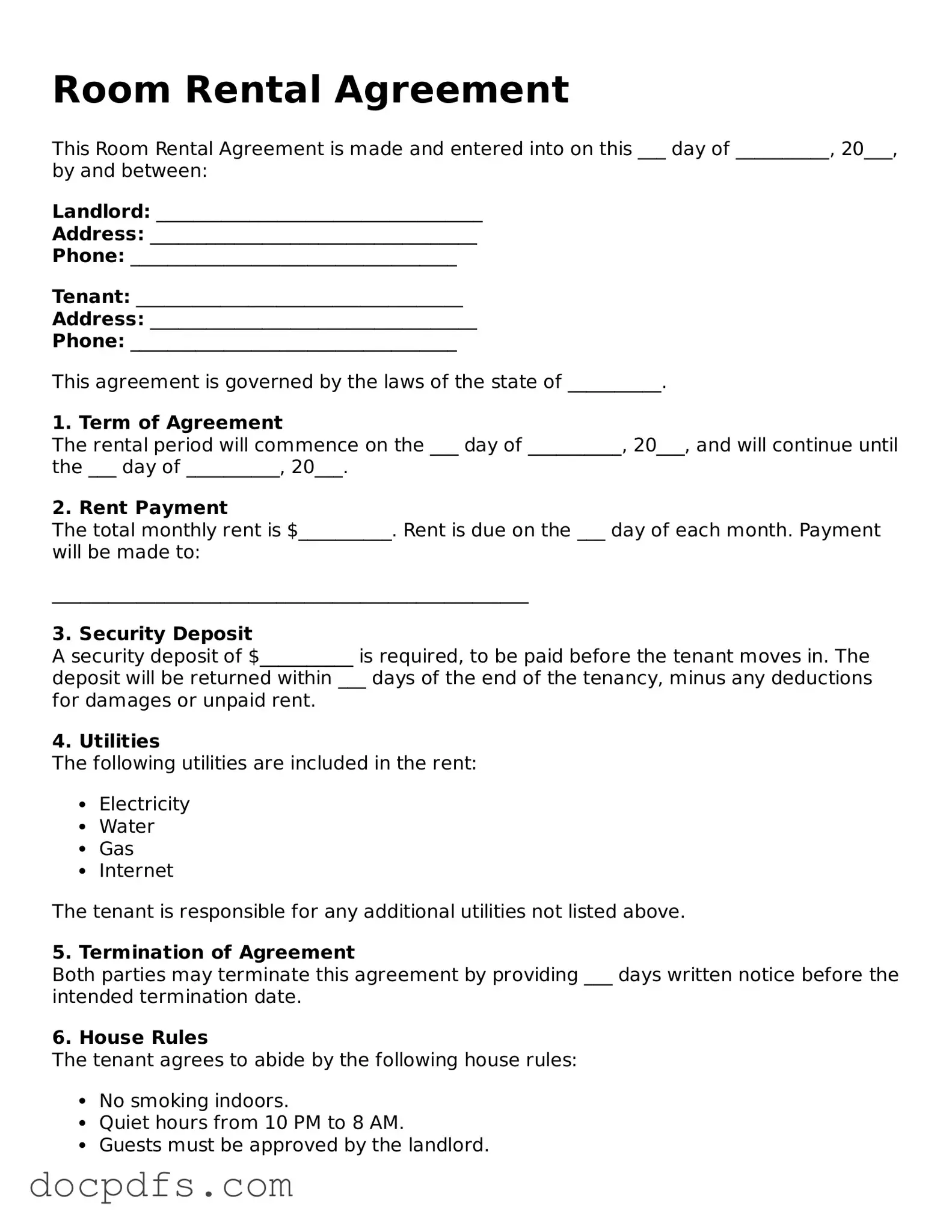What is a Room Rental Agreement?
A Room Rental Agreement is a legal document that outlines the terms and conditions between a landlord and a tenant for renting a room in a property. This agreement specifies important details such as the rental amount, payment due dates, security deposits, and the responsibilities of both parties. It serves to protect the rights of both the landlord and the tenant, ensuring clarity in the rental arrangement.
What should be included in a Room Rental Agreement?
Several key elements should be included in a Room Rental Agreement to ensure it is comprehensive and clear. These elements typically include:
-
Names of the parties:
The full names of the landlord and tenant.
-
Property details:
The address and description of the room being rented.
-
Rental terms:
The monthly rent amount, due date, and acceptable payment methods.
-
Duration of the lease:
The start and end dates of the rental period.
-
Security deposit:
The amount required, terms for its return, and conditions for withholding.
-
Rules and regulations:
Any specific rules regarding the use of the property, guests, pets, and maintenance responsibilities.
How do I enforce the terms of the Room Rental Agreement?
Enforcement of the Room Rental Agreement begins with clear communication. If a tenant violates any terms, the landlord should first address the issue directly with the tenant. If the problem persists, the following steps can be taken:
-
Document the violation with dates and details.
-
Send a written notice to the tenant outlining the issue and requesting compliance.
-
If necessary, consider legal action as a last resort, which may involve eviction proceedings.
Always consult with a legal professional for guidance on enforcement actions to ensure compliance with local laws.
Can a Room Rental Agreement be modified?
Yes, a Room Rental Agreement can be modified, but any changes must be agreed upon by both the landlord and the tenant. Modifications should be documented in writing and signed by both parties to avoid misunderstandings. Common reasons for modifications include changes in rent, lease duration, or specific rules. Keeping an open line of communication can facilitate this process.
What happens if the Room Rental Agreement is not followed?
If either party fails to adhere to the terms of the Room Rental Agreement, it can lead to various consequences. The landlord may issue a notice to the tenant for non-compliance, which could result in eviction if the issue is not resolved. For tenants, failure to pay rent or follow the rules may result in penalties or loss of the security deposit. It is crucial to address any issues promptly to maintain a positive rental relationship.
